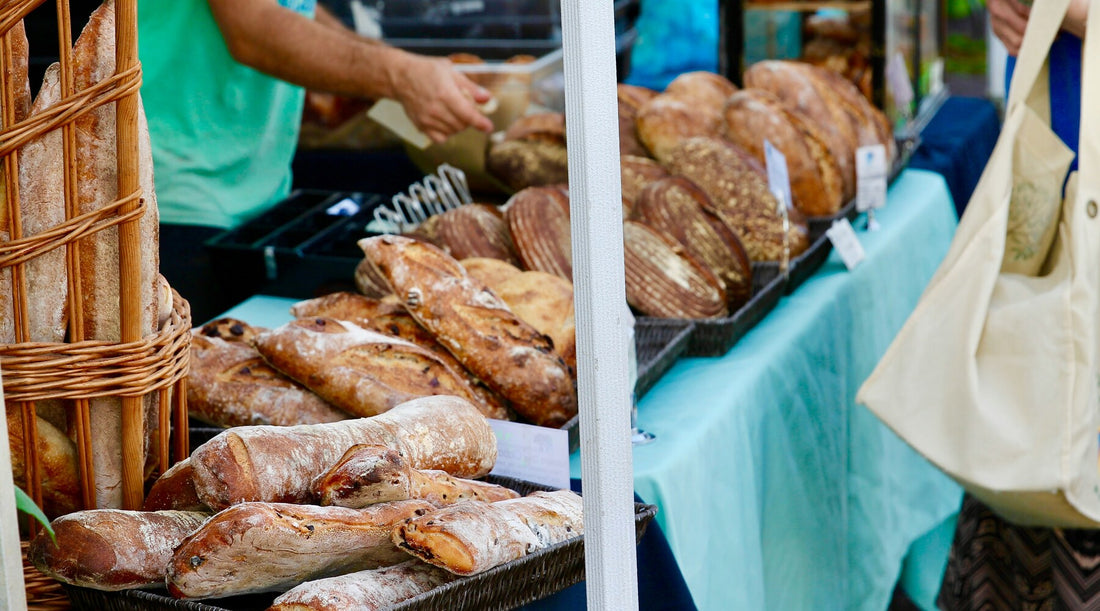An Ultimate Guide to Plan a Successful Pop Up Bakery

Are you dreaming of starting your own baking business but don't want the hassle and expense of a permanent location? A pop up bakery might be the perfect solution for you! This flexible and trendy business model allows you to sell your delicious treats at various locations without committing to a long-term lease. This guide will take you step-by-step through the process of planning, setting up, and running a successful pop-up bakery.
What Is Pop Up Bakery
A pop up bakery is a temporary setup where you sell baked goods at different locations for short periods. These could be farmers’ markets, street fairs, or even inside other businesses like coffee shops and bookstores. The idea is to create a buzz and attract customers by offering something tasty and unique on a limited-time basis. Unlike traditional bakeries, a pop-up bakery provides the flexibility to experiment with new products and locations without the overhead costs.

Supplies for Your Pop Up Bakery
To ensure your pop-up bakery runs smoothly, you'll need to gather some essential supplies. While it may seem overwhelming at first, having the right tools can make all the difference.
- Baking Equipment: Make sure you have reliable ovens, mixers, and baking pans.
- Display Items: Invest in attractive display cases or stands to showcase your baked goods.
- Packaging Supplies: You'll need bags, boxes, and wrapping paper to package your items professionally.
- Point-of-Sale System: A portable system to handle cash and card transactions efficiently.
- Signage: Eye-catching signs to attract customers and let them know who you are.
- Ingredients: High-quality ingredients to ensure your baked goods taste as good as they look.
These basics will help you get started and keep things running smoothly.
Legal Requirements for Pop Up Bakeries
Before you begin selling your baked goods, it's crucial to make sure you're operating legally. Here’s what you need to do:
1. Obtain Permits
Depending on your location, you might need specific permits to sell food. Check with your local health department to understand what is required. For example, you may need a temporary food service permit if you are selling at markets and events, or a cottage food license if you are producing from a home kitchen. These permits ensure that your operation complies with local food safety laws and regulations. Typically, you’ll complete an application form and may have to undergo an inspection to verify that your setup meets health standards.
2. Food Safety Certification
Ensure that you and your staff are certified in food safety. This not only keeps your customers safe but also boosts your credibility. Food safety certification programs teach you how to handle food properly, maintain cleanliness, and prevent contamination. In many regions, the ServSafe Food Handler or Manager certification is widely recognized. Completing such a course usually involves attending a class (either online or in-person) and passing a test. Having this certification prominently displayed can reassure customers that their health is a top priority for you.
3. Licenses
You should also obtain the necessary business licenses. This could include a general business license, a sales tax permit if you plan to sell taxable goods, and possibly a vendor’s license depending on where you set up shop. A business license formalizes your business identity and allows you to operate legally within your city or county. The sales tax permit enables you to collect and remit sales tax to the state, which is essential for compliance. Without these licenses, you risk fines and potential closure of your pop-up bakery by local authorities.
*anchor-1
By covering these legal bases, you'll avoid any unnecessary setbacks or fines. Staying informed about regulations and maintaining compliance will help you build a trustworthy and reputable business.
How to Get your Pop Up Bakery Started
Starting a pop-up bakery involves more than just baking delicious treats. You need a solid plan to ensure your venture is profitable and sustainable.
1. Select a perfect location
Choosing the right spot is crucial for the success of your pop-up bakery. Look for areas with high foot traffic where people are likely to be interested in trying new foods. Farmers' markets, bustling streets, and community events are excellent options. Think about who your target customers are and where they spend their time. If you can, scout out potential locations in advance to see how busy they are during various times of the day. A well-chosen location can significantly boost your sales and visibility.

2. Partner with local business
Teaming up with local businesses can be mutually beneficial. Coffee shops, bookstores, and other small businesses might allow you to set up a booth inside their space. This partnership can drive traffic to both your pop-up bakery and their store. For instance, a coffee shop might benefit from offering fresh pastries that complement their beverages, while you gain access to their regular customer base. Building relationships with local businesses can also lead to long-term opportunities and collaborations that help your business grow.
3. Curate your menu
Your menu should reflect your baking skills and appeal to your target audience. Include a mix of popular favorites like chocolate chip cookies or cinnamon rolls and unique creations that set you apart. Seasonal items can also attract more customers by offering something special and timely. Consider having a few gluten-free or vegan options to cater to different dietary needs. An exciting and diverse menu can keep customers coming back to see what new delights you have to offer.
Decide on a selection of baked goods that will appeal to your target audience and showcase your baking skills.
4. Set competitive price
Research the prices of similar baked goods in your area. Aim to offer competitive rates while ensuring you cover your costs and make a profit. It’s essential to account for expenses like ingredients, packaging, and labor when setting your prices. A good strategy is to offer a range of price points, from affordable items to premium treats. Pricing your goods correctly can make your pop-up bakery attractive to a wider audience and increase your chances of success.
Promotion Strategies for Pop Up Bakeries
Promoting your pop-up bakery effectively can make a huge difference in attracting customers. Here are some strategies to consider:
1. Leverage Social media
Social media platforms like Instagram and Facebook are excellent for promoting your pop-up bakery. Post pictures of your mouth-watering treats, announce your next location, and engage with your followers. Use hashtags relevant to your area and type of food to reach a broader audience. Share behind-the-scenes content, customer reviews, and stories to make your posts more engaging. Consistent social media activity can build a loyal online community that eagerly anticipates your next pop-up event.

2. Distribute eye-catching flyers and posters
Design and distribute flyers and posters in your local area. Make sure they are visually appealing and contain all the important details about your pop-up bakery, such as dates, times, and locations. Place them in high-traffic areas like library bulletin boards, community centers, and local cafes. Consider using vibrant colors and compelling images of your baked goods to draw attention. Well-designed promotional materials can grab people's interest and inform them about your upcoming events.
3. Engage with community
Getting involved in community events can increase your visibility. Participate in local fairs, sponsor community activities, or collaborate with other local vendors. This not only boosts your exposure but also helps you build relationships within the community. Offering free samples at events or hosting a small baking workshop can leave a positive impression. Community engagement can create a supportive network that benefits your pop-up bakery in the long run.
4. Create an unforgettable display
Creating an unforgettable display is essential for capturing the attention of potential customers and making a lasting impression. Start by designing a visually appealing setup that showcases your baked goods in the best light. Use attractive tablecloths, stands, and props that align with your brand's theme. Consider incorporating elements like fairy lights or fresh flowers to add a touch of charm and elegance.
For example, stickers can play a significant role in display and packaging. By using creative stickers, you can make your product packaging more eye-catching and leave a lasting impression on customers. These custom stickers not only increase brand recognition but also add a personalized touch to your packaging, making each customer feel special when they receive your product.
Labels, on the other hand, are essential for organization and categorization. You can use labels to identify different product categories, making it easier for customers to find what they need. It is highly recommended to use adhesive thermal labels in round or rectangle shapes, as they are both practical and efficient. Such labels featuring your brand's logo can be affixed to outer packaging boxes, giving the entire package a more professional and cohesive appearance.
Both of these products—stickers and labels—are available for purchase on the MUNBYN website. These creative labels are particularly suitable for food packages or any other fragile surfaces because they are made from BPA and BPS-free materials, and are both water and oil-proof, ensuring that they will not contaminate the goods. If you choose MUNBYN, you can easily print stickers using the reliable design app.
Conclusion
Running a pop up bakery can be an exciting and rewarding experience. With careful planning, the right supplies, and effective promotion strategies, you can attract a loyal customer base and make your baking dreams come true. Don't forget to comply with all legal requirements to ensure your business runs smoothly. Now, go out there and start sharing your delicious creations with the world!




